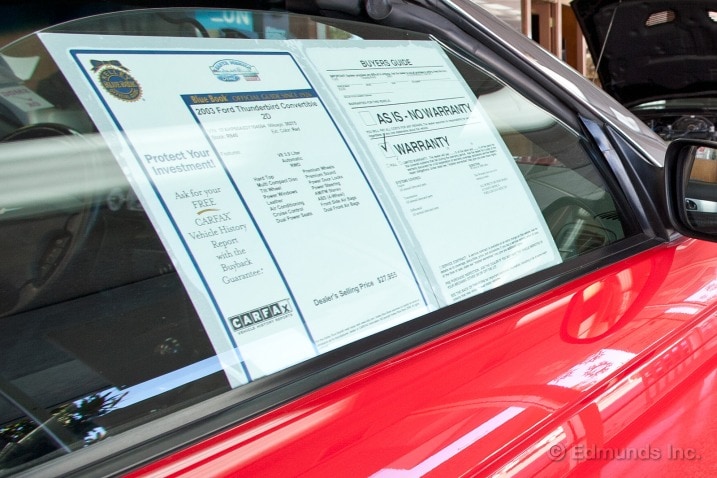We also have some tips on using the terms to negotiate a better deal. If you are shopping for a new car, the pricing terms are different, so be sure to read "MSRP, Sticker and Invoice: Pricing Basics for New-Car Buying."
Now let's decipher used-car pricing lingo.
Asking price: It's the amount that the seller asks for the vehicle, and it's negotiable. The seller knows he might not get the price he's asking. Both private-party sellers and dealerships expect you to come back with your own offer.
How the term is used: A used-car seller might say to a buyer, "Well, $15 grand is my asking price, but make me an offer."
Dealer retail price: A car dealer would like to sell his used vehicle at dealer retail price. This is the highest price and is often the most visible one — it's pasted on the car's windshield in big, bright letters. But, really, a retail price is similar to an asking price, and it is the starting place for negotiations.
How the term is used: A car salesperson might say to a buyer, "This vehicle retails for $20 grand but I'll sell it to you for $17 grand."
Kelley Blue Book price or book price: Shoppers and sellers often refer to a car's "blue book value" without explaining which book they are referring to. The Kelley Blue Book lists Kelley's dealer retail, private-party and trade-in prices.
Car dealers use the Kelley Blue Book to set their retail prices. Edmunds also has a free car appraisal tool that helps you calculate what the retail price for a used vehicle should be. And there are even more guides: Dealers also use NADAguides and the Black Book to evaluate used cars and potential trade-ins. Because of the different ways that these guides arrive at the dealer retail prices, they may differ from each other.
How the term is used: A dealer might say to a would-be buyer, "I'd like to give you more for your trade-in but the book value is really low."
Edmunds average price paid: Edmunds uses a variety of sources to track the average sale price of used vehicles. It adjusts the price based on mileage, condition and options, and then arrives at trade-in, private-party and dealer retail values. The Edmunds free car appraisal tool also shows potential buyers certified pre-owned prices on vehicles if they are relatively new.
Most dealers are familiar with Edmunds and recognize the name when consumers use it in their negotiations on used vehicles.
How the term is used: A buyer might say to a dealer, "Your asking price is a lot higher than Edmunds' dealer retail, so I'm offering $1,000 less."
Trade-in price: Dealerships will offer a trade-in price for your used auto when you buy a new vehicle. The trade-in price is negotiable and very close to what vehicles sell for at used-car auctions.
How the term is used: A car salesperson might say to a buyer, "That's as high as we can go on the trade-in price for your sedan. My inventory is already full of them. The SUV and crossover market is what's red-hot these days."
Wholesale price: This is what the car dealership paid for the vehicle. The parallel in new-vehicle pricing would be the invoice price. The wholesale price is the dealership's rock-bottom figure, and it's unlikely that you'll get the vehicle for that amount. The term is frequently used within the car industry but isn't often used by ordinary private-party car buyers and sellers.
How the term is used: A dealer might say to a buyer, "I can't sell you the car for $11 grand. I paid $12 grand wholesale for it at the auction!"



 by
by 
